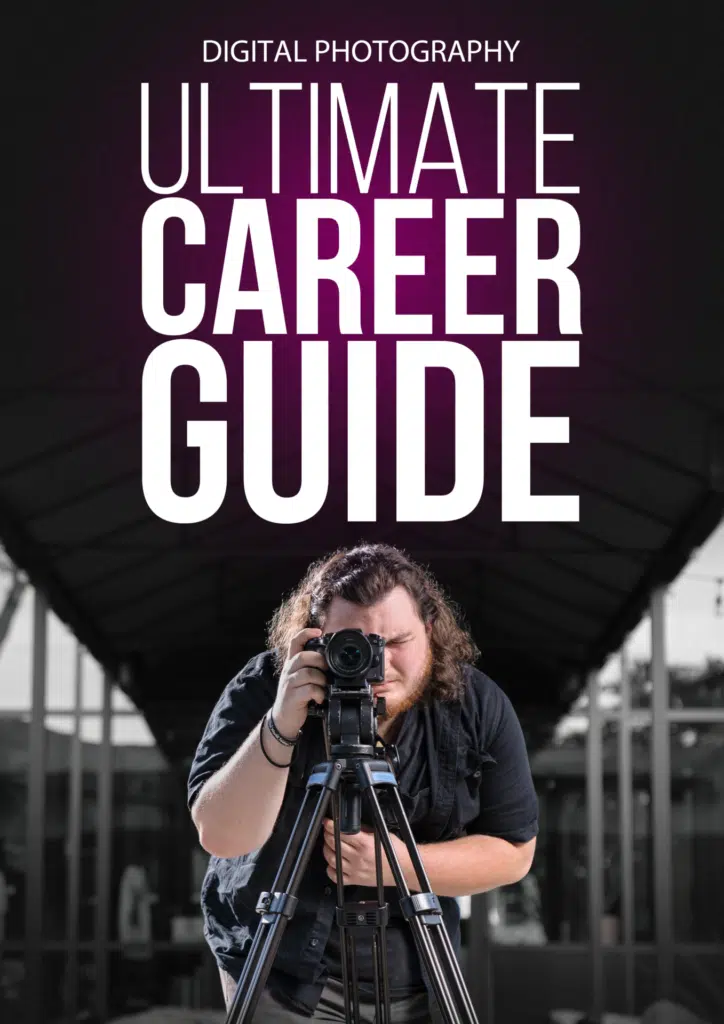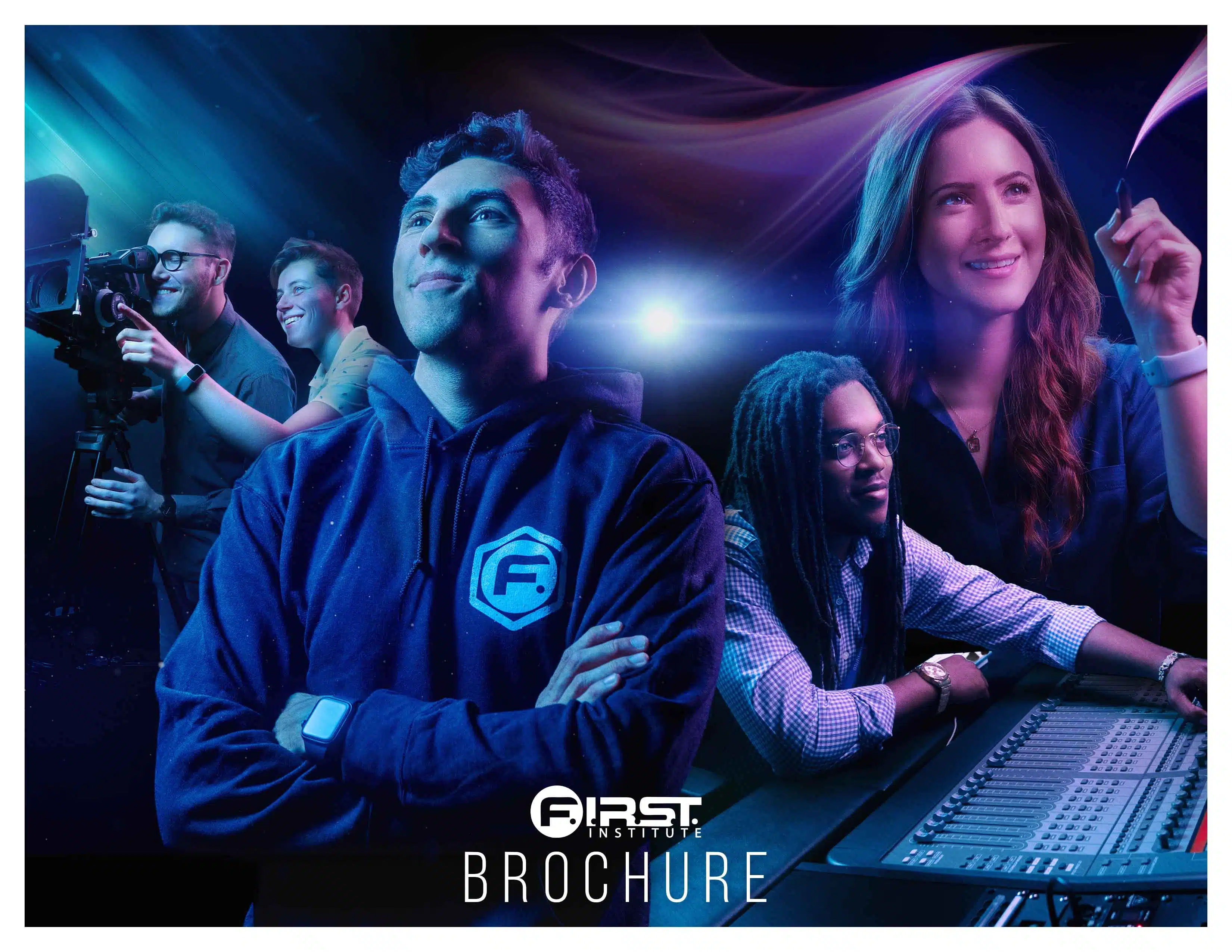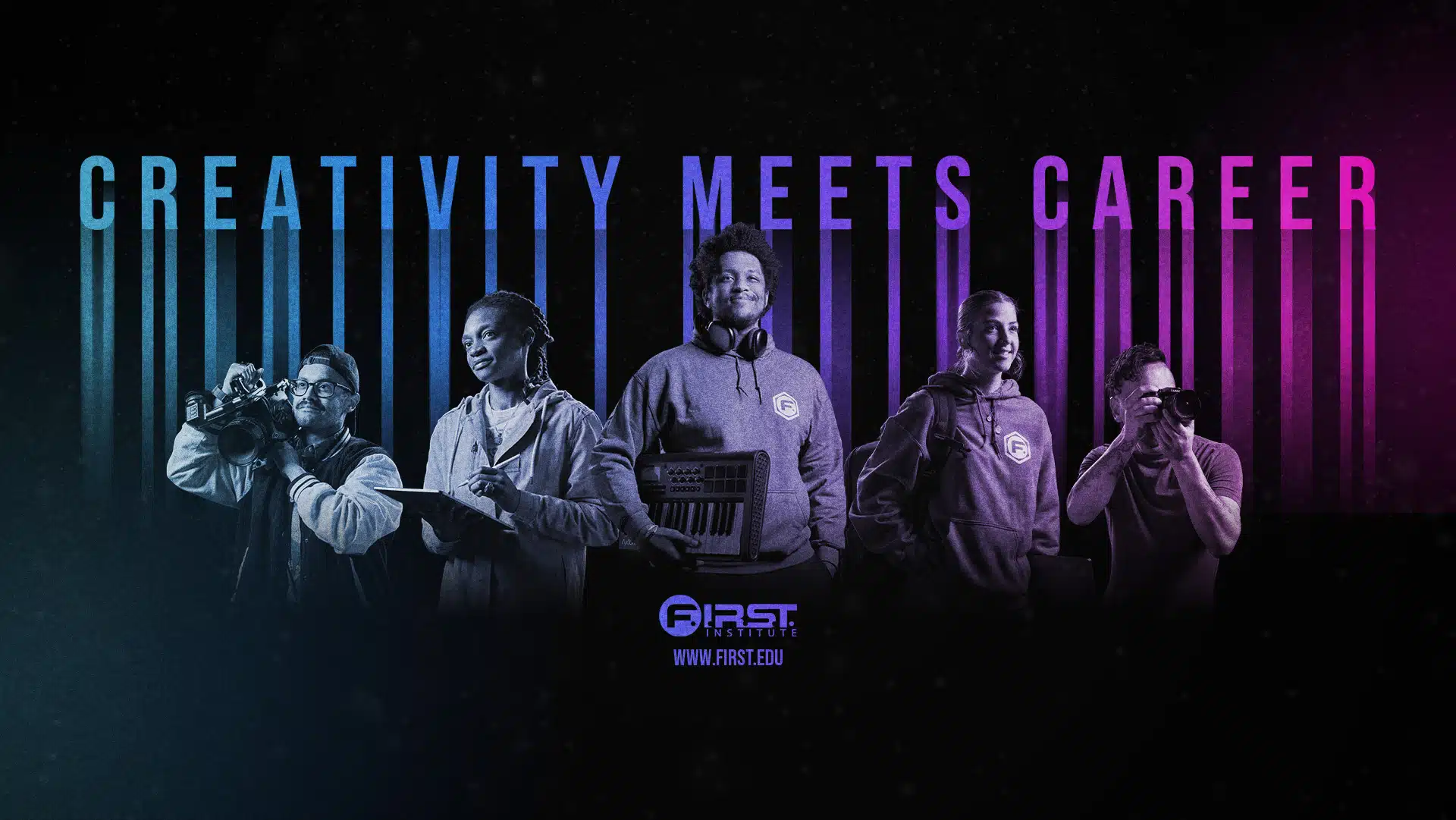PROGRAMS
Digital Photography
The Digital Photography is a program designed to teach students all aspects of digital photography, including lighting, picture staging and capture, editing, and the business of photography. From basic introductory to more advanced classes, students will receive hands-on education using up-to-date technology found in the field and used by professionals for any type of production.
Each stage of production is covered in blocks where students progress through more advanced projects and processes. Students will develop their skills while completing grounded real-world projects mirroring the same application they will use in eventual employment.
F.I.R.S.T. Institute students are graded and held accountable for each course they encounter. Consistent exercises and quizzes keep students active and interested in the information provided by the instructor.
Prerequisite: Basic computer and internet competencies. High school level English or higher.
Delivery Methodology: On Campus
Average Class Size: 16 Students
Upon successful completion of the program, graduates obtain a Diploma.
Thirty-nine (39) Weeks – 1014 Clock Hours / 91.26 Academic Quarter Credit Hours
811 Hours / 81.11 Academic Quarter Credit Hours – Instruction 203 / 10.15 Academic Quarter Credit Hours – Lab
- Program Name Digital Photography
- Total Clock Hours 1014
- Hours - Instruction 811
- Hours - Lab 203
- Your Creative P.A.K. (Included)
- Class Materials (Required)
- DP 101 – Intro to the Camera and Lightroom
- DP 102 – Composition and Aesthetics
- DP 103 – Studio Photography
- DP 104 – Spatial Photography (Landscape, Street, and Architecture
- DP 105 – Photoshop For Digital Editing and Experimental Photography
- DP 106 – Event Photography (Social, Stage, Sports)
- DP 107 – Narrative In Editorial Photography
- DP 108 – Business of Photography
Students in our Digital Photography program receive a Creative P.A.K. to use during the course of their program and beyond. The digital media industry and its relevant technology are ever-changing, so specific items in your Creative P.A.K. may be updated from time to time.
Gear included in the P.A.K.*
Canon EOS R100 Mirrorless Camera with 18-45mm and 55-210mm Lenses Kit
Canon RF 50mm f/1.8 STM Lens (Canon RF)
K&F Concept SA254M2 DSLR Camera Aluminum Tripod with Monopod and Ball Head Kit
Godox TT685C II Flash for Canon Cameras
Godox TT600 Thinklite Flash
Godox S-Type Speedlite Bracket for Bowens
Godox S-Type Bowens Mount Flash Bracket with Softbox Kit (31.5 x 31.5″)
Impact Collapsible Background V2 Kit (5 x 7′, Black/White)
Godox Octa Softbox with Bowens Speed Ring (37.4″)
Impact Light Stand Kit (Black, 6′, 3-Pack)
Tiffen 43mm UV Protector Filter
Raya 5-in-1 Collapsible Reflector Disc (42″)
Canon 100S Sling Camera Backpack (Black)
Godox X2 2.4 GHz TTL Wireless Flash Trigger for Canon
*Specific items are not guaranteed. Contact the school for more information.
Students are required to be prepared for class. This includes having these items at all times: pen, writing paper/notebook, ID badge, and all required materials for their program. The following required items are not included in the tuition. It is the student’s responsibility to purchase the items for use on the first day of class.
-
Adobe Creative Cloud Account
- Student discount is available
- To receive the student discount you must sign up for the annual plan that is paid monthly.
- This includes Adobe Photoshop, and Adobe Lightroom Classic
-
Hard Drive
- USB-C/Thunderbolt 3 drives only.
- Minimum storage size 1TB
-
SD Card
- Size 128GB
For the first week of Intro to the Camera and Lightroom, students will be taught a basic level understanding of computers, their parts, and terminology.
After students have learned the fundamentals of computing and have a good understanding of the different types of digital media formats, students get a sneak peek at Photo Shop and Light Room which is part of the Adobe Creative Suite of Products and is widely used in the photography industry. F.I.R.S.T. then introduces them to the history of the camera, the photographic process, and its relation to the development of the modern digital process. Students will be taught how cameras have been built over time.
Classes are introduced to the exposure triangle, which introduces many of the camera’s mechanical and electronic functions. Students will learn about lenses, first in terms of angle of view, followed by the specialty functions of different lens types. The students will also learn the basics of lighting and composition. Once the students have taken photos, they are taught to use Adobe Lightroom and to see how it has replaced traditional film development processes in the digital space.
DP 101 – Intro to the Camera and Lightroom
- 3 Point Lighting Project
- Resume & Cover Letter Project
In Composition and Aesthetics, students will dive deep into the visual language of photography. They will start by learning common design principles, such as balance, rhythm and repetition, emphasis, proportion, scale, harmony, and contrast.
They will use these principles to study the philosophy of aesthetics and identify common patterns humans find pleasing to the eye. They will analyze some common patterns, such as the Golden Ratio, and how it is applied to photography using the Fibonacci Spiral and the Rule of Thirds.
Students will also learn other common compositional techniques, such as using leading lines to guide the eye, creating frames within the frame, and using contrast to direct attention. Finally, students will explore color theory as it relates to human psychology and the physics of light.
DP 102 – Composition and Aesthetics
- Composition Project
- Color Theory Project,
- Aesthetics Project
- Leading Lines Project
Studio Photography focuses on the principles of lighting through studio portraiture and product photography. Students begin by learning basic 3-point lighting techniques. They will then study other lighting styles by looking at modern photo portraiture and classical art examples.
Students will learn to use studio strobes and light modifiers. Students will replicate some lighting techniques, such as Loop, Butterfly, Rembrandt, and Chiaroscuro, on their models. Emphasis will be placed on studio portrait photography’s creative and commercial aspects.
Students will study the works of some of the great portrait photographers, such as George Hurrell, Annie Leibovitz, Diane Arbus, and Richard Avedon. Students will also spend time on product photography, exploring creative ways to market a product. They will explore minimalist product photography to isolate their subject and active product photography to show the subject in use. Students will become familiar with common product photography tools such as tripods and macro lenses.
DP 103 – Photoshop for Digital Editing and Experimental Photography
- Studio Lighting Project
- Product Photography Project
- Portrait Photography project
- Portfolio Project
In Spatial Photography, students will learn to illustrate the essence of a scene. During their exploration of landscape photography, students will document the beauty of the natural world. They will be taught to emphasize depth in an environment through lens choice, depth of field, and use of foreground elements.
Students will learn to use filters, long exposure, weather, and time of day to evoke their impression of the natural spaces around them.
Students will then move into urban environments, using the same techniques to document human-made interventions, structures, and environments. They will be taught to find interesting, unexplored perspectives and isolate small details. As street photographers, they will learn to isolate movement within these spaces to document incidental moments of life.
Throughout this course, students will also survey the history of photographers whose work focuses on the spaces in our lives and more.
DP 104 – Spatial Photography (Landscape, Street, and Architecture)
- Landscape Project
- Architecture Project
- Sequences Project
- Real Estate Project
Photoshop can digitally replicate the darkroom and montage techniques that experimental artists use. Photoshop for Digital Editing and Experimental Photography is an extensive survey of Photoshop’s many tools through the lens of experimental photography.
Students will learn non-destructive Photoshop processes and tools, including blend modes, adjustment layers, color channels, and effects and filters. Using these tools, students will learn to composite, retouch photos, create multiple exposures, and digitally replicate the effects of specialty optical equipment.
Finally, they will be exposed to the many new features that use neural networks and artificial intelligence to solve complex photo manipulation better and even create images from scratch.
DP 105 – Photoshop for Digital Editing and Experimental Photography
- Product Retouching Project
- Portrait Retouching Project
- Composite Project
Students will focus on three practical projects in Event Photography. First, they will document a social event. Students will create a shooting strategy for the event and create a list of key images that they must photo- graph. At the event they will shoot a mix of posed, candid, and environmental photos. This will teach them the skills they need to pursue commercial enterprises in wedding and party photography.
Next, students will document a staged event. Here they must learn to work in unusual lighting situations, which will put their camera skills to the test. They must also learn to collaborate with the production team to complete their work unnoticed, allowing performances to continue unimpeded. Finally, students will photo- graph a sporting event where they will need to focus on lensing and shutter speed to get action photos in a fast-paced and dynamic environment.
DP 106 – Event Photography (Social, Stage, and Sports)
• Shooting for Social Events Project
• Shooting for Staged Events Project
• Shooting for Sports Project
Narrative in Editorial Photography is all about the story. Students will look to the work of previous photographers who have made the narrative an essential ingredient of their work.
Story will be analyzed and broken down into key components to illustrate the intersection of character and plot. They will analyze how a single moment caught in a photo can imply both previous and subsequent moments of cause and effect. Students will create work to complement articles as well as short series that stand alone as narrative experiences.
DP 107 – Narrative in Editorial Photography
- Narrative Photographers Project
- Storytelling Project
- Short Series Project
In the Business of Photography, important skill sets are developed through studies on creative thinking, research and concept development, business communications, client briefing, and analysis.
Students learn branding fundamentals and then examine marketing in relation to corporate and personal branding and social media. Students will finish the program by completing a comprehensive portfolio, participating in critique sessions, and finalizing the portfolio on their own website.
DP 108 – Business of Photography
- Portfolio Website Project
- Creating A Contract Project
- Marketing Project
Admissions & Financial Aid
Admissions Process
Personalized Tours – Our admissions team is dedicated to helping you find a program that best fits your goals. Take an in-person or virtual tour to see how F.I.R.S.T. can help you.
Apply Anytime – With class starts occurring every other month, you can apply now and find a start date that works best for your schedule
Flexible Schedules – Classes meet in the morning or evening allowing you to find one that best fits your busy schedule.
Funding Your Education
Tuition – Our tuition covers the entire program cost, including access to equipment and production facilities on campus, as well as the Creative P.A.K.
Federal Aid – We strongly encourage incoming students to explore financial aid options. Pell Grants and student loans are available to those who qualify.




